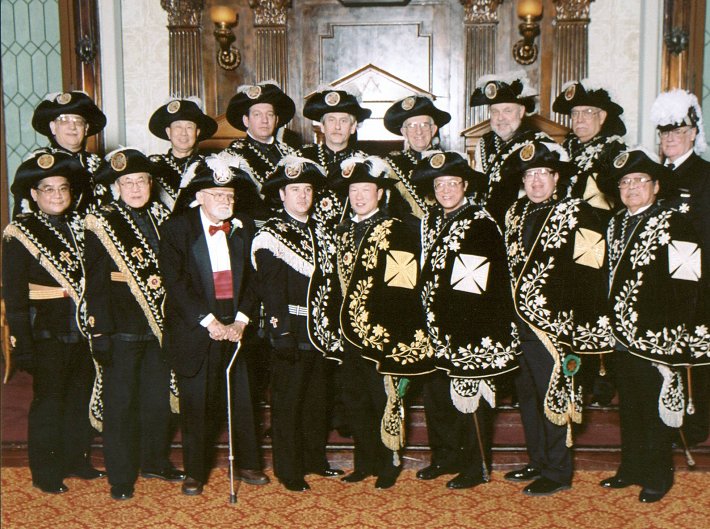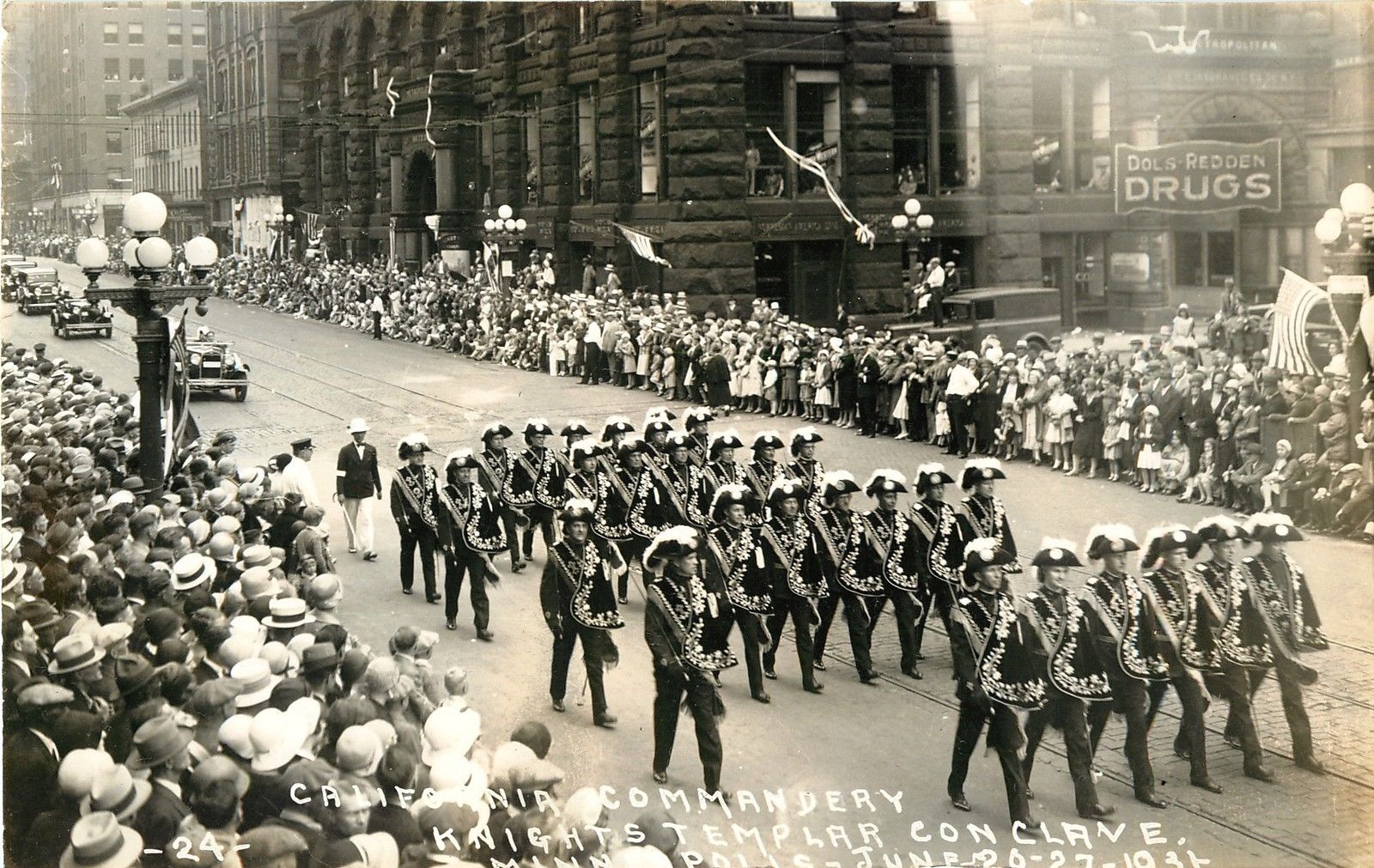Early
Ornate California
Knight
Templar Regalia

Installation of Officers for 2000
California Commandery No. 1,
Knights Templar
A few short years after the
discovery of gold and the formation of the State of California, eleven Sir
Knights requested and were granted a dispensation from the General Grand
Encampment of the United States of America, to form an encampment of Knights
Templar on November 10, 1852. This new encampment was named San
Francisco Encampment No. 1 Its first Grand Commander was Gregory Yale,
William B. Wakeman - Generalissimo, Abram Bartol - Captain General and the
following members: Richard Knott, Garrett W. Ryckman, Joesph Waterman,
John H. Brown, Luther T. Wilson, James A. McDougall, William H. Folger and
Henry A. Cobb. On December 22, 1852, five more members were added as
original members of the Encampment.
In September, 1856, the General Grand Encampment
having, at its triennial meeting, made sundry changes in the designations of
the various bodies under its jurisdiction, and in the title of their officers,
this Encampment was thereafter known and designated as "San Francisco
Commandery No. 1", and its chief officer was entitled simply "Commander".
On August 10, 1858, a Grand Commandery of the Order for the State of
California was formed by San Francisco Commandery No. 1, Sacramento Commandery
No. 2 and Pacific Commandery No. 3; and upon the following day, upon the
application of this Commandery, its name was changed by that body and it was
ordered that it be known thereafter as "California Commandery No. 1".
The spectacular gold and silver embroidered
uniform worn by the member of this pioneer Commandery of Knights Templar dates
from about 1855 and is a mounted unit uniform. It is modeled on the
first Knight Templar uniform ever seen on the West Coast.
That uniform was worn by Sir Knight and Judge
Isaac E. Davis (a member of our Commandery, who was later to be elected the
first Grand Commander of Knights Templar in California) at the laying of the
cornerstone of the Sacramento County Courthouse in September of 1854. He
wore a black felt slouch hat rimmed with velvet, silver laced and turned up at
the side and clasped with a red passion cross. There was no plume, but
in its place a profusion of long, narrow black ribbons, which floated in the
air and hung down his back.
About his shoulders was a black and velvet baldric
(sash), emblazoned with a red cross and trimmed in silver lace. He had
leggings of black velvet trimmed with silver and laced with silver cord ending
in tassels. He rode a spirited and showy black horse with a much
ornamented California saddle, a silver-mounted Mexican bridle and huge
silver-mounted spurs. And instead of a sword, he carried a regular
cavalry saber.
The full
dress uniform of California Commandery No. 1, K.T., is reminiscent of the one
worn by Sir Knight Isaac Davis and was adopted by the Commandery in its
present form, in 1857. The flowing cape and baldric, both of the finest
Lyon silk velvet elaborately embroidered with gold and/or silver bouillon,
were made in France before World War I, and it is unfortunate that the looms
on which the cloth for these items was woven were destroyed in that conflict.
At the 1904 Trienniel in San Francisco, of the more than
10,000 Sir Knights in the parade marching down Market Street, there were 400
members of California Commandery on horseback with shabracks (saddle pad
coverings) and breast collars that matched their uniform. At one
time they even had a mounted drill unit. As anyone knows who has
worked with horses, that type of drill team would require almost daily
practice.
As the only
Commandery in California permitted to wear this distinctive uniform,
California Commandery continues to preserve this historic touch with the early
days of the Golden State, and remains one of their proudest and most cherished
traditions.


Class D Drill Team prior to
competition at the annual Grand Conclave in Valencia, California.



A special
"Thanks" to Companion/Brother Kevin Conragan, KYCH, Past Commander 1998,
California Commandery No.1, K.T., General Chairman Sesquicentennial Committee
(Nov. 8, 2003) for submitting the historical information on the above Uniform.

